While many diseases are diagnosed to be incurable, we push the limits of medical science to cure our loved ones. Modern science has progressed and expanded beyond our imagination. However, the younger generation always brought surprises. Without those gifts, the progress of humanity would have come to a standstill. The achievements of modern science and the human desire to spread its wings go hand in hand. All generations before us have lived and survived in a world of diseases and disabilities. However, if we can give our future progeny a gift, then why shouldn't we? Medical science took a great leap with the invention of magnetoelectric nanobots. Though humanity has advanced by leaps and bounds in the previous decades alone, recent innovations and discoveries have proved that humanity is yet to achieve its best.

Magnetoelectric nanorobots are yet another example of our untapped potential for creativity and progress. Prof. Soutik Betal did his Ph.D. in Electrical Engineering from the University of Texas at San Antonio, under the guidance of Prof. Ruyan Guo and Dr. Amar Bhalla. He has worked as a research scientist in Prague and is now a professor at IIT Delhi. His research interests include nanorobotics, electromagnetic medical devices and implants, nanofabrications, and electronic devices and sensors. He did extensive research on chemotherapy and decided to dig deeper to explore new methods to give targeted treatment to reduce the pain and suffering generally incurred by patients. He felt that there could be no better way than having specially-designed nanorobots to provide targeted treatment.
"Human body is the most complex electrical machine. To sense those electrical fields at the nanoscopic level was impossible because none of the sensors could really do that. Even surgical methods were not able to perform this activity. I explored these three fields extensively and tried to bring it to use in a common device.", says Prof. Soutik.
The magnetoelectric nanorobot invented by Prof. Soutik has received the Guinness World record for the smallest robot.
This robot has a body!
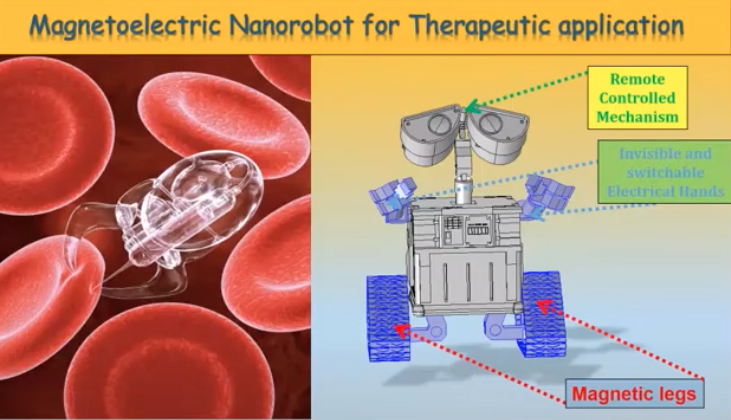
It is 1/1000th the thickness of human hair. It has hands, feet, and a body. Not just that. It created a world record with a size of 120nm. It has a shell made of barium titanate and a core of cobalt ferrite. This nanorobot will be arranged in rows and covered with silicon nanofibers. Many such rows will be stacked in a microcapsule with a pH-sensitive coating. One such capsule will contain millions of nanorobots. These capsules will be one of the pathways in which these nanorobots can enter our bodies.This robot has a remote-controlled mechanism that allows us to monitor and control its movement and activities inside the body. It has invisible and switchable electric hands along with magnetic legs.

How do these nanorobots work?

Remote control is to control these nanoparticles through electromagnetic fields. It has cellular electric field sensing. These robots are fabricated core-shell nanoparticles that can be used dynamically to reach into our cells and manipulate them as per the requirement of targeted cell treatment. Due to the unimaginably miniature size of these nanorobots, they can travel to desired locations to perform cell transport and permeation. The capsules with thousands of these nanobots will travel to the targeted cells and release the nanobots near the target. These capsules were monitored using an optical microscope during experimentation. However, to monitor the capsules within the human body, an MRI will be required.
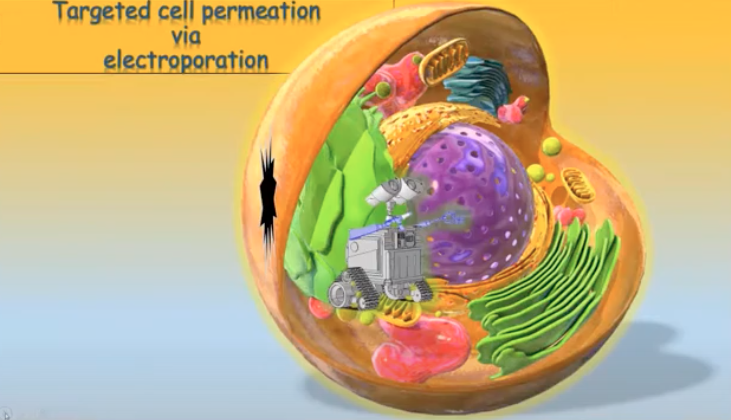
"In-Vivo experiments - Nanorobots will be monitored using nanoparticle-assisted MRI. In-Vitro experiments - Nanorobots will be monitored using a bright field microscope. For movement of nanorobots with micron-scale precision, an Octamag system will help in the movement of Nanorobots in XYZ direction along with a custom made high precision software." as stated by Prof. Soutik.
Also called MENR, these robots are remote-controlled by AC and DC magnetic fields.These nanorobots work on magnetoelectricity at the nanoscale, which is converse of electromagnetism. They penetrate the cells through the nanopores on their walls. It is made possible through targeted cell permeation via electroporation. Remote magnetic pulse application is used to perform the loading and unloading of antiretroviral drugs. It is an externally controlled directional magnetic field pulse.
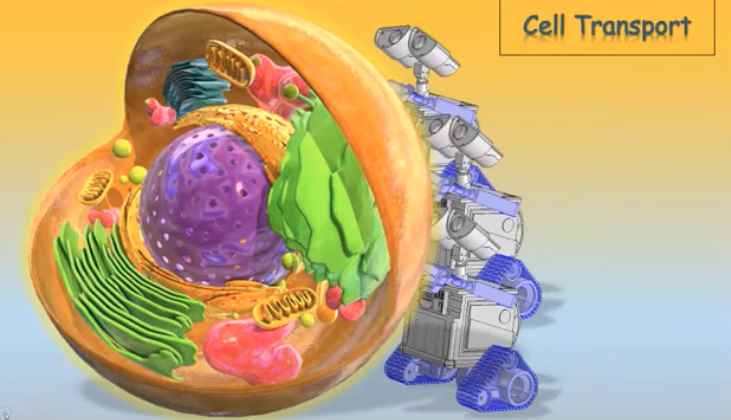
Once they have completed their task, they exit the body painlessly. They can leave through sweat, exhaled air, and other excretory processes.Their exposure inside the body is for a few milliseconds to seconds. These intelligent nanorobots are auto-recovery nanodevices, so malfunctioning is close to impossible. MENRs are smart and can differentiate between targeted and non-targeted cells. MENRs never interact with non-targeted cells. They gain speed with increasing surrounding cell density.
Limitations of using electroporation
One of the limitations is that such a high electric field application can lead to the destruction of cells. Since electroporation is a multistep process with several distinct complex phases, there is room for failure. Targeted drug delivery to a particular infected cell or a group of infected cells through nanopores of a cell membrane is still a probabilistic event.Despite the limitations and difficulties, we hope that improving and transforming these nanobots will continue.
"At one point, I was a chemist, a physicist, an electrical engineer, as well as a software person. This experience helped me learn a lot since I was exposed to multiple courses during my Ph.D.", stated Prof. Soutik.
The applications
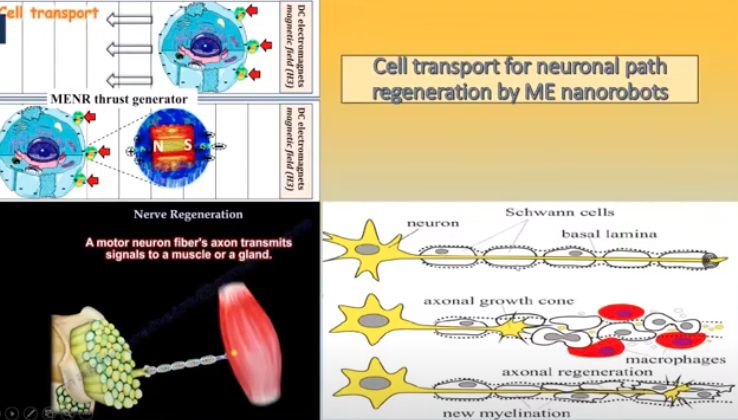
These MENRs have limitless applications in the biomedical field, especially for therapeutic applications. Once inside a cell, MENRs can be used to deliver chemotherapeutic drugs, protein molecules or even alter our DNA. It is capable of cell transport without disturbing adhered cell areas. At large, this can help in neuronal path regeneration.These nerve and neural path regeneration techniques can bring revolutionary changes in treating diseases like Alzheimer's, cancer, genetic disorders, nerve signal irregularities, and related disabilities. The applications are unlimited and can be extended to reconnecting signals with transplanted organs, treating Parkinson's, and vision reconstruction.
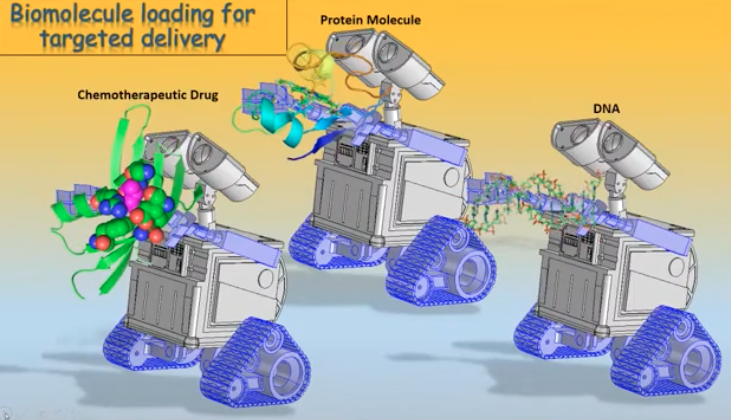
Future
MENRs are in the process of being approved for human trials, for which they are in talks with AIIMS. Once approved, they will be ready for the commercial market.It is cleaner, safer, and painless. It can reduce the patient's suffering as well as the time spent in the hospital. Society will need time to understand these treatment methods.
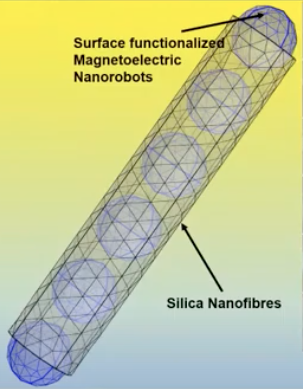
"It was a challenge to fabricate the structure of these nanorobots due to their size. To fabricate them, customize them, characterize them, and eventually have them replicated in the same structure took me two years, " says Professor Soutik while describing his journey.
These MENRs, which are smaller than the dust particles we inhale every second, could prove to revolutionize medical treatment for coming generations.
The only limit is our imagination.
Sources: Youtube channel- Department of Chemistry, IIT Delhi Webinar Series & https://home.iitd.ac.in/spotlight-soutik.php

